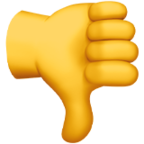Quick! When you think of pro wrestling in the 1980s, who comes to mind? Certainly, the drug-fueled charms of the salacious and ostentatious Ric Flair are indelibly imbued into our collective memories. Can’t you almost hear the raspy, strained shouts of "Macho Man" Randy Savage? And of course, the omnipresence of Hulk Hogan’s red and yellow logo will forever be etched into wrestling history.
But the thing about nostalgia is that it tends to whitewash some of the darker parts of history in favor of a rose-tinted rearview. Times have changed and it’s increasingly difficult to view grapplers like The Ultimate Warrior without considering his appalling and bigoted worldviews. Even still, the in-ring exploits of him and other legends that may be deemed controversial must still be acknowledged thanks to their unforgettable runs on top.
Although the world of '80s pro wrestling was filled with neon tiger stripes and cocaine dreams, that decade was also a time of immense athleticism, over-the-top characters, and intrepid innovation in the art of combat sports. With that in mind, we’ve created an alternate pantheon of iconic wrestling legends and lesser-known heroes who many would consider underappreciated compared to the more ubiquitous and deeply obvious wrestling celebrities of that decade. Our rubric is based on cultural pervasiveness, global influence, and pure in-ring skill.
RELATED: The 24 Best '90s Wrestlers, Ranked




































